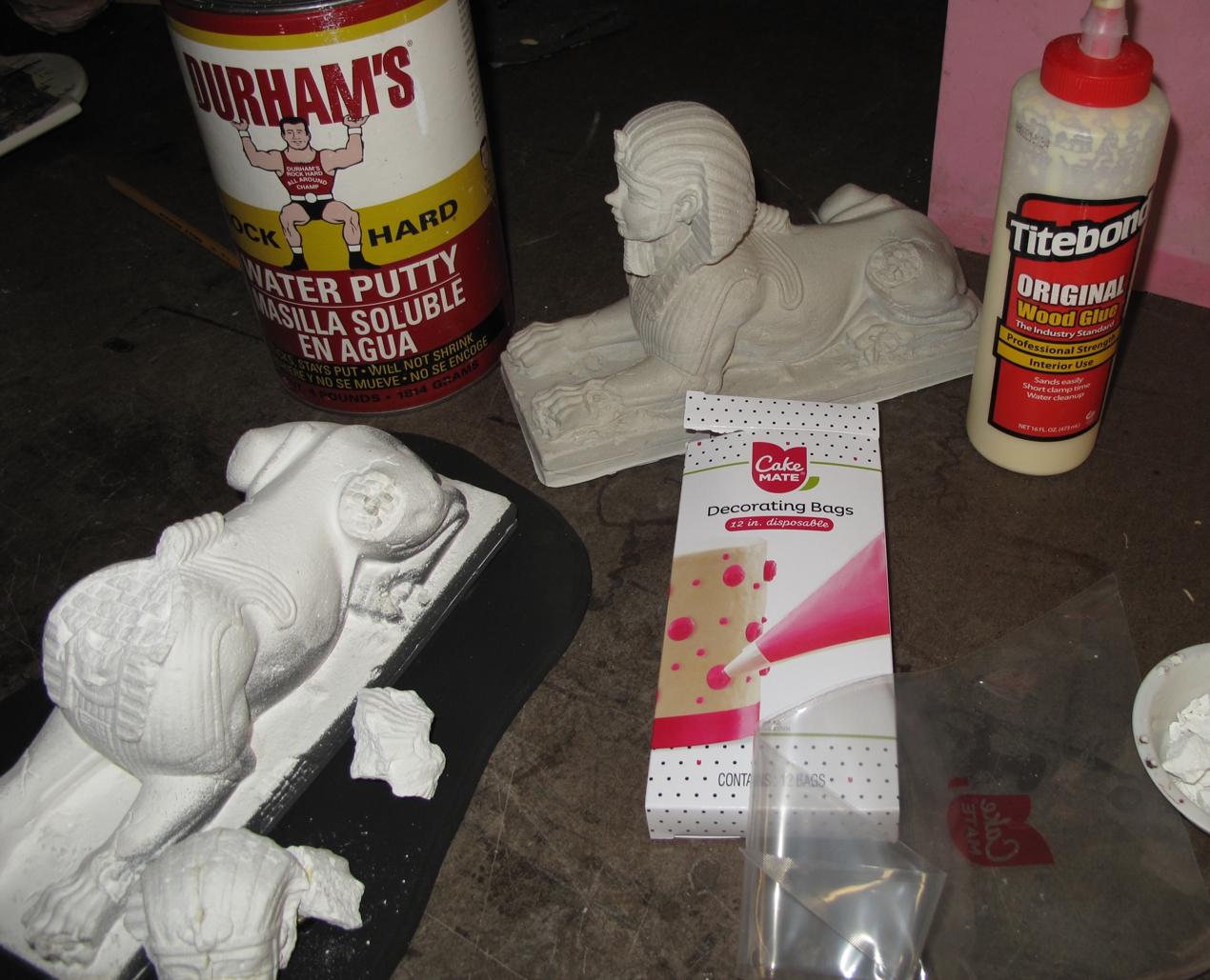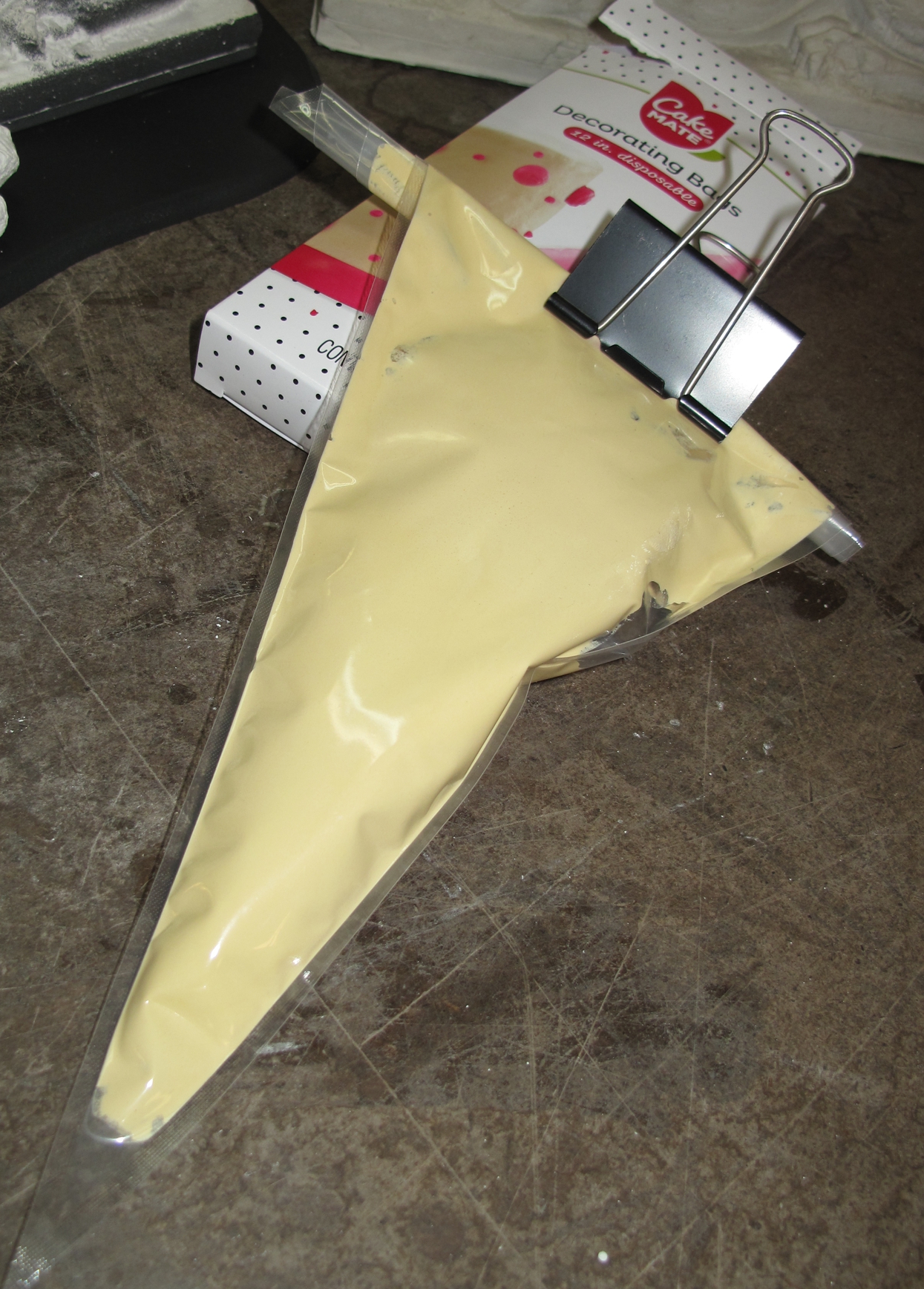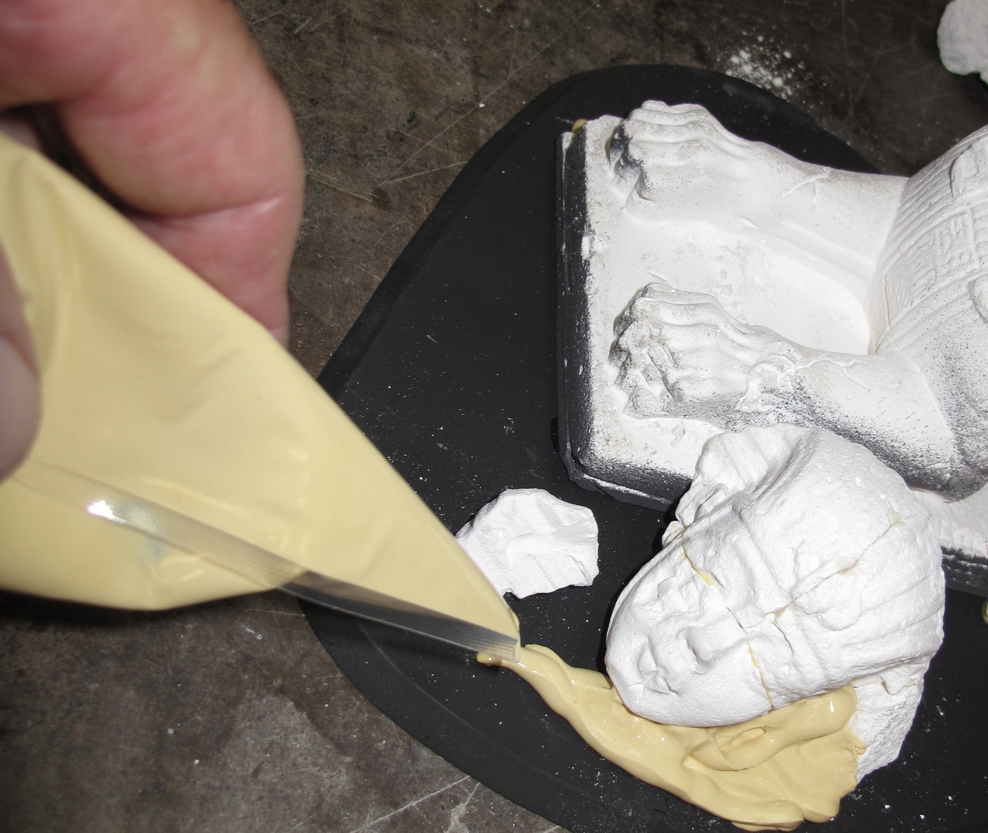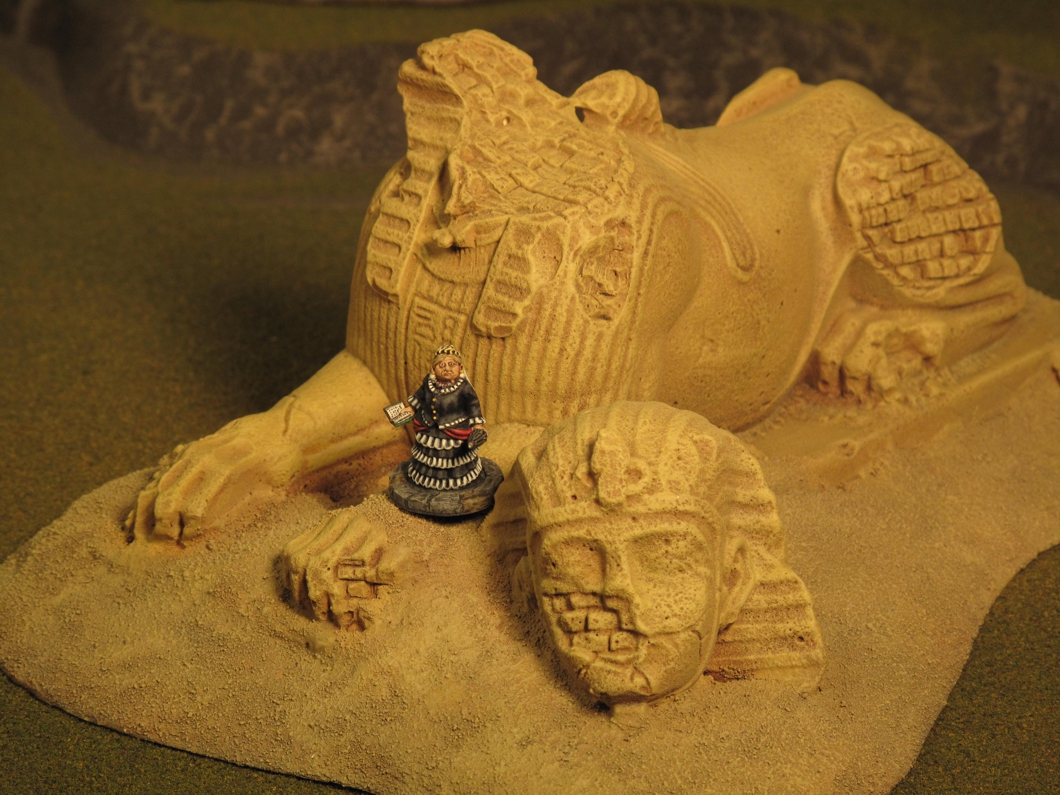Being a guy who couldn’t cook to save his life and likely to starve with out my good wife watching over me you can imagine my wife and daughters surprise several years ago when they caught me watching the “Great British Baking Show”! I found the show fun to watch, interesting to see how these baked works of art were created, and frankly I could listen to the dictionary being read to me if it was done with an English accent! Little did I know that what I would learn watching this show would help me in the wargaming world…. I make a lot of terrain and while making a damaged “Sphinx” model for a friend I thought about what a pain it was to spread out filler on the base while creating the underlay for the drifting sand. I use “Durham’s Rock-Hard” wood putty quite a bit and it can be messy and a bit troublesome when trying to apply in a controlled manner quickly. It spreads easy when very thin, gets into cracks, but wont hold shape well or stay put. When its thicker it is hard to spread out evenly, retains brush marks and starts to set up.
I make a lot of terrain and while making a damaged “Sphinx” model for a friend I thought about what a pain it was to spread out filler on the base while creating the underlay for the drifting sand. I use “Durham’s Rock-Hard” wood putty quite a bit and it can be messy and a bit troublesome when trying to apply in a controlled manner quickly. It spreads easy when very thin, gets into cracks, but wont hold shape well or stay put. When its thicker it is hard to spread out evenly, retains brush marks and starts to set up. I spent a few days on other projects, always though in the back of my mind thinking on a new way to apply the filler. Then bingo I thought back to the baking show and how they used “icing cones” when decorating cakes, would it work with wood putty?
I spent a few days on other projects, always though in the back of my mind thinking on a new way to apply the filler. Then bingo I thought back to the baking show and how they used “icing cones” when decorating cakes, would it work with wood putty?
A quick trip to the market and I had a dozen plastic “icing cones” for $6 US. Mixed up a fist size batch of filler, scooped it into the icing bag, rolled and clipped the bag end closed, cut the other end off creating about a ¼ inch hole, and I was ready to go.
To apply it you simply point the open tip where you want filler and squeeze the bag!  Wow, just like a tube of toothpaste, it worked better than I had hoped for.
Wow, just like a tube of toothpaste, it worked better than I had hoped for.
- Varying consistency of the mix, thicker or thinner, helps in control and flow.
- Roll from the “fill” end pushing material towards the tip. Like a tube of toothpaste!
- Small clips are useful to close each end.
- A few soft flat brushes and water can help in moving or smoothing out applied filler.
- A small amount of PVA wood glue added to the mix makes the putty even harder!
- Bags are reusable when cleaned out quickly.
 Who would have thought that watching “the Great British Baking Show” would make one a better painter… just goes to show you never know where that next “cool trick” will come from!
Who would have thought that watching “the Great British Baking Show” would make one a better painter… just goes to show you never know where that next “cool trick” will come from!
Bill Witthans

Neat trick. I use the stuff as well, and it is damnably hard to control its application ordinarily!
NIce work Bill. Good tip! I will pass it along to the painter/modellers here in Phoenix. JC
Hi John! Thanks, funny some of the things you learn in life and the different ways you find to use that knowledge… The post is actually from an article I wrote for Wargames Illustrated a few moths ago. Once it appears in the magazine I can publish it here. I’ve written three or four over the last year or so for their “Quick Fire” section of short articles.
Nice technique! My wife does baking so maybe I can steal a bag and try it out myself. 😀
Thanks Stewart, for small jobs it may not be worth it but I’m about to try it in a large syringe like you would use for injecting spice into meat. Perhaps leaving the actual needle type tip off. Should work well for those smaller jobs where precise control is needed. One of the main benefits is is having the mix not be exposed to the air and extending the working time! A turkey baster might also be handy.